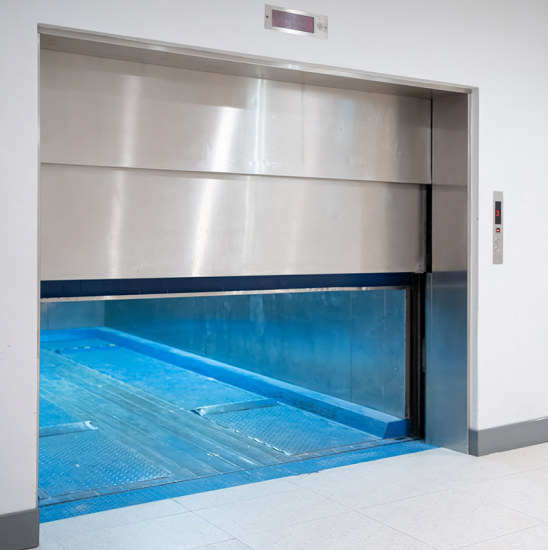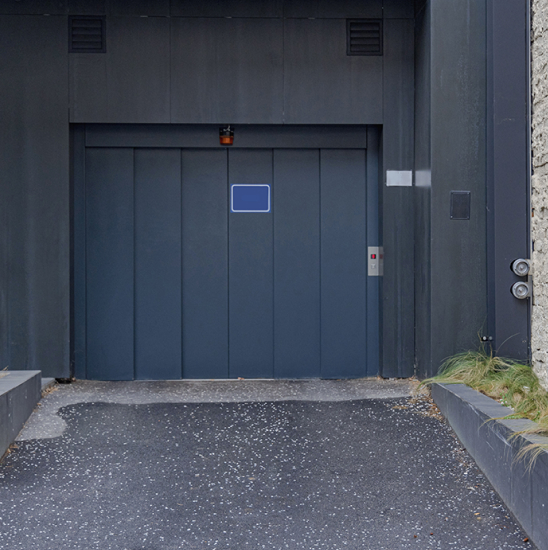PRODUCT
Nippon Lift Korea creates new way & space

Passenger Elevator
An examination of historical architecture reveals that while tall buildings could be constructed in the past,
the prevalence of numerous stairs likely deterred their widespread development.
This issue persisted until 1854 when Elisha Graves Otis, an American mechanic, invented a safety brake (parachute) that halted the elevator shortly after a rope break, significantly enhancing elevator safety.
This invention paved the way for the widespread use of elevators for vertical passenger transportation. Today, passenger elevators, operating at speeds between 1 to 2.5 meters per second, are installed in medium-traffic buildings typically no taller than 30 meters.
Choosing the right capacity and number of elevators is crucial in building design, as any mistake can result in reduced passenger satisfaction, longer waiting times, or reduced usable space, leading to economic losses.
This invention paved the way for the widespread use of elevators for vertical passenger transportation. Today, passenger elevators, operating at speeds between 1 to 2.5 meters per second, are installed in medium-traffic buildings typically no taller than 30 meters.
Choosing the right capacity and number of elevators is crucial in building design, as any mistake can result in reduced passenger satisfaction, longer waiting times, or reduced usable space, leading to economic losses.


Home Lift
In the modern era, there is a focus on universal principles that can be applied anytime, anywhere,
and under any conditions.
For instance, Le Corbusier viewed a house as a machine for living. This highlights the importance of home lifts, which improve quality of life by facilitating easy movement between floors within a home.
Home lifts can be installed in houses that were not originally designed to accommodate them. They can carry 2 to 6 people and are available in hydraulic or traction designs. Home lifts do not require a machine room, overhead, or pit, enhancing their user-friendly appeal. These lifts also feature a safety brake (parachute) and an emergency power system.
For instance, Le Corbusier viewed a house as a machine for living. This highlights the importance of home lifts, which improve quality of life by facilitating easy movement between floors within a home.
Home lifts can be installed in houses that were not originally designed to accommodate them. They can carry 2 to 6 people and are available in hydraulic or traction designs. Home lifts do not require a machine room, overhead, or pit, enhancing their user-friendly appeal. These lifts also feature a safety brake (parachute) and an emergency power system.
Observation Elevator
Glass has been widely used since the Middle Ages, but new types of layered, reinforced, and brick glass emerged in the 20th century, increasing its use in construction.
Advances in technology made glass cheaper and available in larger formats, leading to the production of observation elevators.
These elevators are typically used in offices, hotels, and stores for vertical passenger transportation.
Advances in technology made glass cheaper and available in larger formats, leading to the production of observation elevators.
These elevators are typically used in offices, hotels, and stores for vertical passenger transportation.


High-Speed Elevator
As cities grow and urbanization increases, the number of high-rise buildings also rises.
High-rise buildings typically have more than 12 floors and exceed 90 meters in height.
Proper design and placement of elevators, considering factors such as the number of floors, building height, structural strength, and elevator shaft dimensions, are essential to enhancing the positives and minimizing the negatives of high-rise buildings.
The speed of high-speed elevators ranges from 2 to 10 meters per second, depending on these factors.
Proper design and placement of elevators, considering factors such as the number of floors, building height, structural strength, and elevator shaft dimensions, are essential to enhancing the positives and minimizing the negatives of high-rise buildings.
The speed of high-speed elevators ranges from 2 to 10 meters per second, depending on these factors.
Dumbwaiter
Restaurants are fundamental institutions worldwide, and delivering food efficiently is critical for customer satisfaction and business success.
The dumbwaiter, invented in 1840, transports food and dishes between floors in kitchens and restaurants, minimizing the need for staff and providing higher safety than other elevators.
The dumbwaiter, invented in 1840, transports food and dishes between floors in kitchens and restaurants, minimizing the need for staff and providing higher safety than other elevators.


Hospital Elevator
Transporting patients safely in medical facilities has always been a concern.
Modern hospital elevators must provide a germ-free environment with regular cabin ventilation and antibacterial buttons.
Hospital elevators serve three main functions: transporting patients, staff, and visitors, and carrying hospital waste. Each type must be designed and installed to meet specific needs without interfering with the others.
Hospital elevators serve three main functions: transporting patients, staff, and visitors, and carrying hospital waste. Each type must be designed and installed to meet specific needs without interfering with the others.
Freight Elevator
The Industrial Revolution (1760-1840) brought significant changes to industry, replacing manual labor with machinery.
Today, factories and production facilities play a crucial role in meeting human needs, and freight elevators are essential for transporting goods and cargo within these buildings.
Freight elevators, with speeds ranging from 0.5 to 1.5 meters per second, can carry loads from 2300 to 4500 kilograms.
Today, factories and production facilities play a crucial role in meeting human needs, and freight elevators are essential for transporting goods and cargo within these buildings.
Freight elevators, with speeds ranging from 0.5 to 1.5 meters per second, can carry loads from 2300 to 4500 kilograms.


Car Lift
To maximize parking space, builders often increase the number of basement levels in buildings.
However, dedicating a significant portion of each floor to ramps reduces the efficiency of parking space use.
Car lifts, with cabin dimensions typically around 2.5 to 3 meters by 4.5 to 6 meters and capacities between 2.5 to 7 tons, are recommended for places like apartment parking, repair shops, and large warehouses, providing speeds of 0.5 to 1 meter per second as an alternative to ramps
Car lifts, with cabin dimensions typically around 2.5 to 3 meters by 4.5 to 6 meters and capacities between 2.5 to 7 tons, are recommended for places like apartment parking, repair shops, and large warehouses, providing speeds of 0.5 to 1 meter per second as an alternative to ramps
Request
Request
If you leave any questions about Nippon Lift Korea
I'll answer you after checking the person in charge
I'll answer you after checking the person in charge
